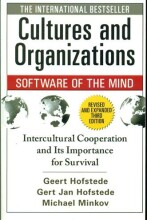Summary: Thesis Version 24Dec 21
- This + 400k other summaries
- A unique study and practice tool
- Never study anything twice again
- Get the grades you hope for
- 100% sure, 100% understanding
Read the summary and the most important questions on Thesis Version 24Dec 21
-
1 1.1 Overview of Research
This is a preview. There are 7 more flashcards available for chapter 1
Show more cards here -
What is Continuous Integration (CI) and how does it benefit software development organizations?
- Continuous Integration (CI) allows more frequent integration of software changes
- Faster and more cost-effective software evolution
- Eliminates integration issues early
- Enhances collaboration among developers
- Increases software quality and efficiency
- Supports agile development practices -
What is regression testing and why is it time-consuming during the integration cycle?
- Part of integration cycle, also known as a software build
- Includes a significant number of tests in a test suite
- Test execution can take hours or days
- Tests the entire system for any regressions or bugs -
How does Test Case Minimization (TCM) differ from Test Case Selection (TCS) in terms of optimizing tests?
- TCM removes unnecessary (redundant) test cases
- Reduces the size of a test suite based on defined benchmarks
- TCS selects a collection of test cases effective for the modified portion of a System Under Test (SUT) -
What are the benefits and limitations of using Neural Networks for test case prioritization according to the provided data?
- Benefits of using Neural Networks include continuous actions, adaptiveness, and test cases prioritization efficiency.
- Limitations involve the need for a long history of tests, more data processing, and ineffectiveness if the test history is insufficiently long. -
How do Genetic Algorithms benefit test case prioritization and what are their limitations?
- Advantages of Genetic Algorithms are adaptiveness, simplicity, considering severity of faults, execution time, structural coverage, and greater efficiency than non-adaptive approaches.
- They struggle with scaling on complexity and lack optimization without sufficient execution time for test cases. -
What is the impact of using SVM for test case prioritization and what are its drawbacks?
- SVM enhances prediction results through different kernel functions and requires less computational power.
- It is not well-suited for large software metric quantities. -
Why is there a need for effective techniques considering constraints like testing budget, restricted resources, and CI environmental constraints in each test build?
- Existing TCP techniques can be used in CI development
- Proposed CI techniques require modifications for constraints
- Limitations on time, budget, and resources in CI environment
- Effective technique needed considering all constraints for each test build -
Enumerate the benefits and limitations of employing K-means for test case prioritization.
- K-means excels in large scale testing.
- Its drawbacks include a dependence on the initial values. -
What are the benefits and limitations of LSTM as listed in the table?
- LSTM is proficient in retaining information over long periods.
- However, it has a longer training period and requires more memory to train. -
What is the goal of Test Case Prioritization (TCP) in the context of Machine Learning applications?
- Reduce the cost of regression testing
- Maximize test suite fault detection capability
- Minimize time and effort needed for regression testing
- Develop realistic solutions to address challenges in regression testing
- Higher grades + faster learning
- Never study anything twice
- 100% sure, 100% understanding
































